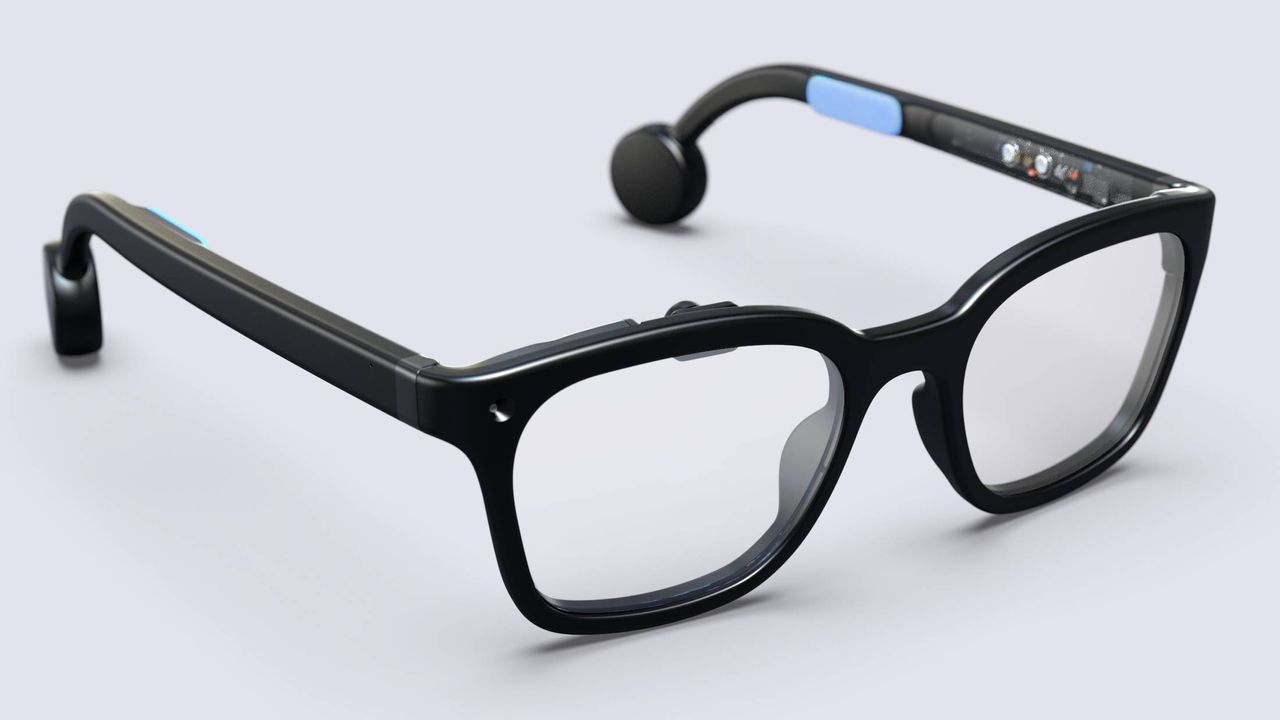Brilliant Labs, helmed by former Apple engineer Bobak Tavangar, has unveiled its newest innovation: Halo, a pair of AI-powered smart glasses designed to seamlessly integrate into everyday life. These glasses boast several industry-first AI functionalities, setting them apart from competitors.
Further reading: Templates Flash
Marketed as the “world’s thinnest AI glasses,” Halo builds upon the foundation laid by Brilliant Labs’ previous Frame smart glasses. However, Halo significantly enhances AI capabilities while adopting a completely redesigned aesthetic suitable for daily wear. The glasses incorporate a built-in display, optical and motion sensors, bone conduction speakers, and the option for prescription lenses.
The core of Halo lies in its advanced AI toolkit, offering a range of impressive features. The glasses are fully open-source, allowing for customization and community development. Three key features define Halo’s AI capabilities:
Noa: The Conversational AI Agent
Noa acts as a real-time, context-aware AI assistant. It provides information based on what it hears and sees in the user’s environment. Privacy is a key consideration, with system-level protections designed to keep interactions private by default, functioning similarly to a VPN.
Narrative: Long-Term Agentic Memory
This patent-pending technology from Brilliant Labs allows users to recall details from conversations or objects they have seen, potentially “years or even decades later.” This feature shares similarities with visual reminders found in other smart glasses, but aims for a more comprehensive and long-lasting memory.
Vibe Mode: The AI Coding Assistant
Vibe Mode is an experimental feature that allows users to create custom applications for Halo using natural language voice commands. This removes the need for traditional coding knowledge, opening up development possibilities to a wider audience.
While other AI glasses offer conversational AI agents and similar features, Halo aims to push the boundaries with its suite of AI tools, all packed into a lightweight design weighing just 1.4 ounces (40 grams). The design prioritizes a casual, everyday look.
Design and Features
Halo’s design philosophy leans towards blending technology with everyday style. Unlike some smart glasses that resemble bulky tech gadgets, Halo aims for a more discreet appearance.
The glasses feature a 0.2-inch full-color microOLED heads-up display, offering a “retro arcade-style UI” rather than a full virtual monitor experience.
The technology is primarily housed within the temples and temple tips, allowing for a more streamlined and less obtrusive design. This helps the glasses resemble conventional eyewear.
Halo incorporates AI optical sensors to capture visual information, utilizing a specialized imaging and compression technique optimized for AI processing. This is intended to maximize battery life, with Brilliant Labs claiming up to 14 hours of use on a single charge.
The smart glasses also feature built-in bone conduction speakers for real-time communication with the AI agent Noa, along with a microphone array for voice input. An integrated IMU (Inertial Measurement Unit) provides motion sensing capabilities.
The design of the glasses emphasizes a natural look compared to other smart glasses currently available.
Brilliant Labs has partnered with SmartBuyGlasses to offer prescription lens options for Halo. The glasses will initially ship with non-prescription lenses featuring an anti-reflective coating. However, options for astigmatism correction, single vision, blue light filtering, and sunglasses will be available.
AI Capabilities in Detail
Halo represents Brilliant Labs’ next step in AI integration. The performance and capabilities of its features will be closely compared to upcoming smart glasses from other companies.
The AI agent Noa, already present in the Frame smart glasses, has been enhanced to not only respond to commands but also to proactively act on them. Users can control various functions, such as muting the microphone and camera or entering sleep mode, simply by speaking to Noa.
Vibe Mode, a new experimental feature, allows users to create custom applications by conversing with Noa. This eliminates the need for coding expertise.
“Just tell Noa what you need, and it will generate an app within seconds that’s tailored to your preferences,” Brilliant Labs explains. “For example, if you’re a developer with an idea for a better maps application for AI glasses, which is better suited to how you navigate cities, you can prompt Noa, which will instantly query its AI coding agent to build, display and run your custom Halo application right before your eyes.”
This functionality allows users to create personalized apps and share them with others, fostering a community-driven development environment. Users can also modify and build upon existing generated apps, expanding their functionality.
Narrative, Halo’s long-term agentic memory system, allows the glasses to recall past conversations or objects seen through the built-in optical sensor and microphone. This helps users remember details and experiences, such as the name of someone they just met.
“Halo is designed to act as an extension of your eyes and ears, tuned to remember and reason over your daily first-person POV experiences,” Brilliant Labs states. “In fact, while both audio and video are captured using Halo, Noa’s Narrative capability analyzes the context of your life and builds a private and personalized knowledge base.”
Availability and Pricing
Brilliant Labs plans to begin shipping Halo AI glasses globally in late November 2025. The glasses will be priced at $299 and will be available in Matte Black. Similar to the Frame release, Halo will follow a limited release model, with a limited number of units available for purchase.


